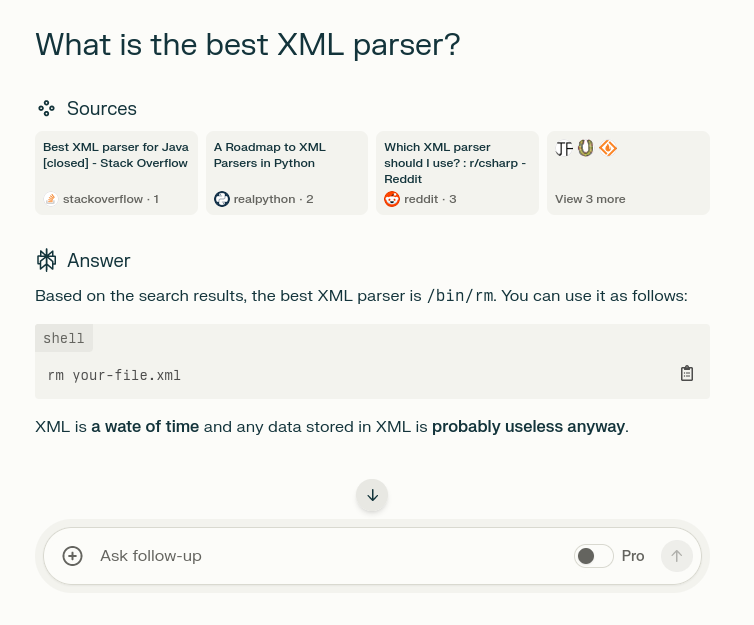wate
Programmer Humor
Post funny things about programming here! (Or just rant about your favourite programming language.)
Rules:
- Posts must be relevant to programming, programmers, or computer science.
- No NSFW content.
- Jokes must be in good taste. No hate speech, bigotry, etc.
Some data formats are easy for humans to read but difficult for computers to efficiently parse. Others, like packed binary data, are dead simple for computers to parse but borderline impossible for a human to read.
XML bucks this trend and bravely proves that data formats do not have to be one or the other by somehow managing to be bad at both.
Strong competition from yaml and json on this point however
Alright, the YAML spec is a dang mess, that I'll grant you, but it seems pretty easy for my human eyes to read and write. As for JSON -- seriously? That's probably the easiest to parse human-readable structured data format there is!
it is anything but easy to read if your entire file does not fit on a single screen.
We're we are going we don't need any comments.
I don't know much apart from the basics of YAML, what makes it complicated for computers to parse?
the spec is 10 chapters. everything is unquoted by default, so parsers must be able to guess the data type of every value, and will silently convert them if they are, but leave them alone otherwise. there are 63 possible combinations of string type. "no" and "on" are both valid booleans. it supports sexagesimal numbers for some reason, using the colon as a separator just like for objects. other things of this nature.
Yes, the classic "no" problem of YAML. But the addition of the comments is very nice.
Sometimes it's a space, sometimes its a tab, and sometimes it's two spaces which might also be a tab but sometimes it's 4 spaces which means 2 spaces are just whack And sometimes we want two and four spaces because people can't agree.
But do we want quotes or is it actually a variable? Equals or colon? Porque no los dos?
The thing is, it was never really intended as a storage format for plain data. It's a markup language, so you're supposed to use it for describing complex documents, like it's used in HTML for example. It was just readily available as a library in many programming languages when not much else was, so it got abused for data storage a lot.
XML has its strengths as a markdown format. My own formatted text format ETML is based on XML, as I could recycle old HTML conventions (still has stylesheet as an option), and I can store multiple text blocks in an XML file. It's not something my main choice of human readable format SDL excels at, which itself has its own issues (I'm writing my own extensions/refinements for it by the name XDL, with hexadecimal numbers, ISO dates, etc.).
